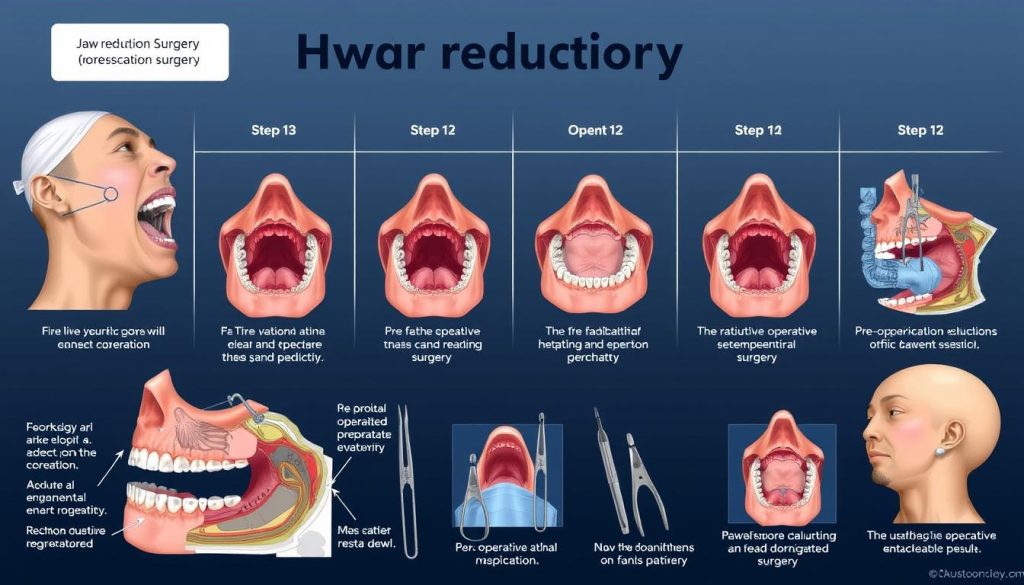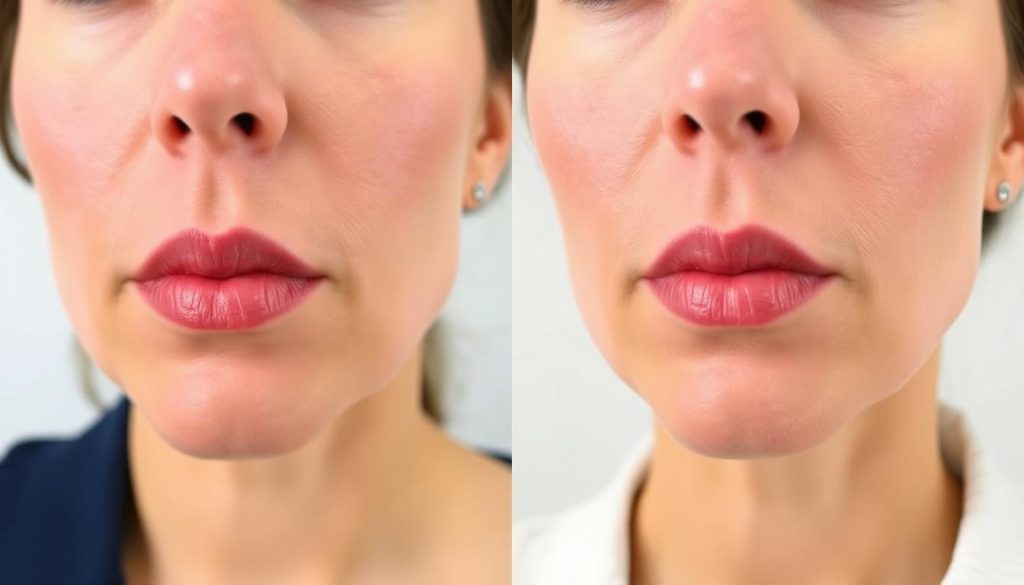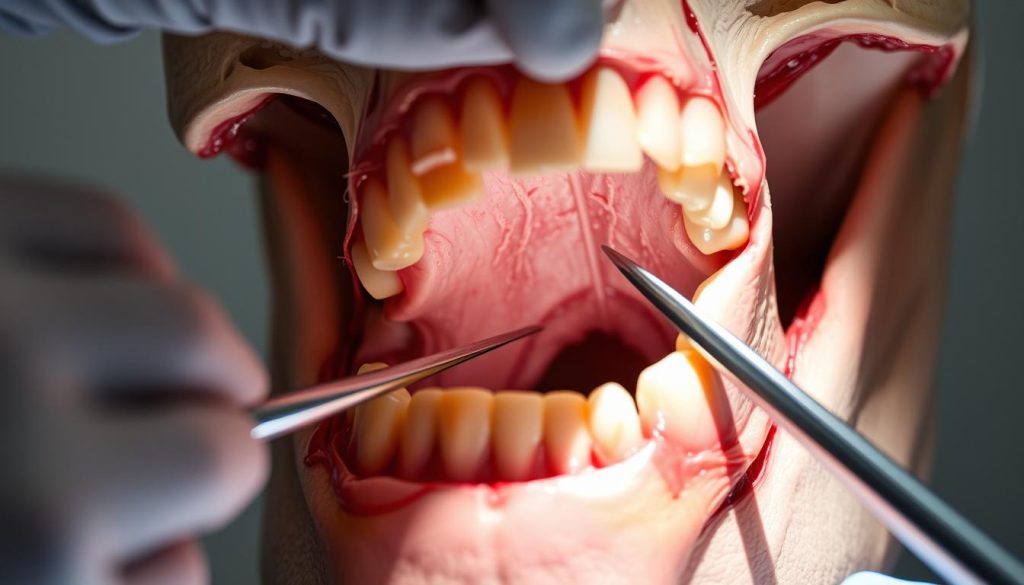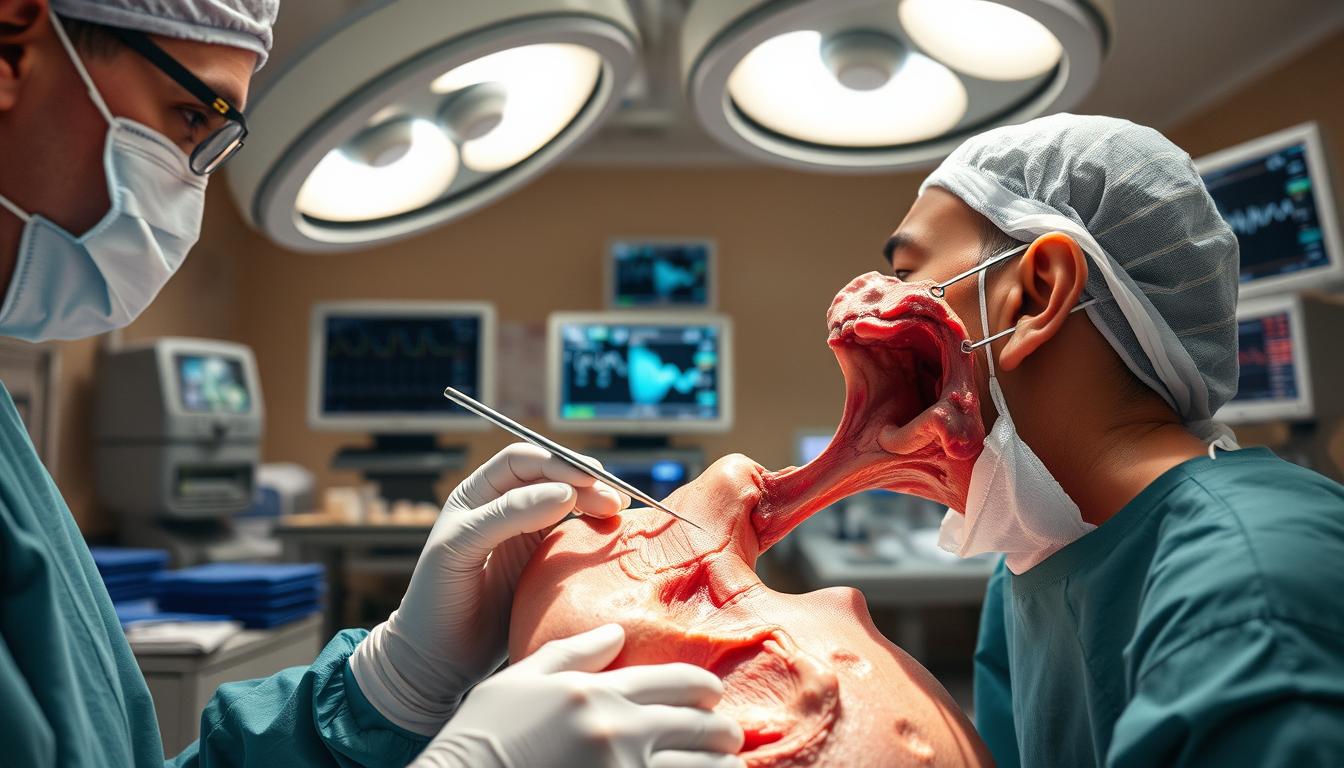Jaw reduction surgery is a transformative procedure designed to create a slimmer, more balanced facial profile by reshaping the jawbone structure. This surgery addresses concerns related to square or overly prominent jawlines, resulting in a softer, more contoured appearance.
Understanding the complete process from consultation through recovery helps patients prepare mentally and physically for this significant facial contouring procedure. Modern techniques offer precise bone reshaping with minimal damage to surrounding tissues, ensuring a more streamlined and aesthetically pleasing jawline.
Key Takeaways
- Jaw reduction surgery creates a slimmer facial profile.
- The procedure reshapes the jawbone for a softer appearance.
- Understanding the process helps patients prepare.
- Modern techniques minimize damage to surrounding tissues.
- Results are permanent, offering a lasting solution.
What Is Jaw Reduction Surgery

Jaw reduction surgery is a cosmetic procedure aimed at reshaping the jawline for a more aesthetically pleasing facial structure. This surgical intervention is designed for individuals seeking a slimmer facial profile.
Definition and Purpose
Jaw reduction surgery, also known as mandibular angle reduction, is a procedure that reduces the width and prominence of the jawline. Its primary purpose is to achieve a more balanced and harmonious facial appearance.
Different Approaches to Jaw Contouring
There are various approaches to jaw contouring, including standard jaw reduction and advanced “V-line” jaw reduction. The latter addresses both the mandibular angles and the chin area for comprehensive facial reshaping. Surgical techniques typically involve incisions inside the mouth to access the jawbone, leaving no visible external scars.
Some techniques incorporate ultrasonic technology for precise bone reduction with minimal trauma to surrounding tissues. The choice of approach depends on the patient’s facial structure, aesthetic goals, and the surgeon’s assessment.
Benefits of Jaw Reduction Surgery

The advantages of jaw reduction surgery extend beyond mere cosmetic improvements. This surgical procedure is designed to provide a more balanced facial structure, enhancing both the appearance and the patient’s overall well-being.
Aesthetic Improvements
Jaw reduction surgery can significantly enhance facial aesthetics by slimming down the jawline, creating a softer and more feminine or masculine appearance, depending on the patient’s preference. This results in a more harmonious facial balance.
Permanent Results and Facial Harmony
The surgery provides permanent results, eliminating the need for repeated treatments. Key benefits include:
- Unlike temporary solutions, jaw reduction surgery offers lasting structural changes.
- The procedure creates facial harmony by proportioning the lower face with the middle and upper facial regions.
- Many patients experience significant psychological benefits, including improved self-confidence.
- The permanent nature of the results makes it a cost-effective solution.
- Results refine over time as swelling subsides, revealing a stable facial contour.
Ideal Candidates for the Procedure
Being a good candidate for jaw reduction surgery requires a blend of good health, realistic expectations, and a thorough consultation with a qualified surgeon.
During this consultation, patients can review before and after photos of real patients who have undergone the procedure and discuss their goals.
Common Concerns Addressed
Jaw reduction surgery addresses various concerns, including a prominent jawline that may affect facial aesthetics. Patients seeking this procedure often desire a more balanced facial appearance.
Medical and Aesthetic Considerations
Patients must be in good overall health and have realistic expectations about the outcomes of jaw reduction. A qualified surgeon will assess jaw bone density, facial muscle development, and overall facial proportions to determine suitability for the procedure.

The Surgical Consultation Process
Before undergoing jaw reduction surgery, a thorough consultation with your surgeon is essential. This meeting allows you to understand the procedure, discuss your goals, and determine if you’re a suitable candidate.
What to Discuss With Your Surgeon
During the consultation, discuss the limitations of jaw reduction surgery based on your facial anatomy and bone structure. Your surgeon should explain the recovery timeline, including when you can expect to see initial improvements and when final results will be apparent.
- Understand how jaw reduction will harmonize with your other facial features.
- Discuss whether additional procedures might be recommended for optimal facial balance.
Setting Realistic Expectations
It’s crucial to understand that some swelling may persist for months after surgery, and final results may take time to fully manifest. Your surgeon should explain how aging might affect your results over time and what maintenance, if any, might be needed.
| Consultation Topics | Description |
|---|---|
| Limitations of Jaw Reduction | Understanding the natural limitations based on facial anatomy and bone structure. |
| Recovery Timeline | Discussing when to expect initial improvements and final results. |
| Facial Harmony | Ensuring jaw reduction harmonizes with other facial features. |
The Jaw Reduction Surgery Procedure

Undergoing jaw reduction surgery involves a series of meticulous steps to achieve the desired outcome. The procedure is tailored to each individual’s needs, ensuring a personalized outcome.
Preparation and Anesthesia
The surgery begins with preparation and anesthesia to ensure patient comfort. Anesthesia is administered to minimize pain during the procedure.
Surgical Techniques and Ultrasonic Method
The surgical team employs advanced surgical techniques, including the ultrasonic method, to precision-reshape the jawbone. This approach allows for a more precise reduction and minimizes recovery time.
Duration and Completion
The complete jaw reduction procedure typically takes between 1-3 hours. After bone reshaping is complete, the surgical incisions are closed with dissolvable sutures. A compression bandage is applied to minimize swelling and support the newly contoured jawline.
Recovery Timeline and Post-Surgical Care
Understanding the recovery timeline and post-surgical care requirements is essential for patients undergoing jaw reduction surgery. The initial recovery phase is critical, with most patients resuming work and everyday activities within one week.
First Week After Surgery
During the first week, patients should focus on resting and minimizing strenuous activities. “Sleeping with your head elevated during the first days promotes the recovery process,” as it helps reduce swelling.
Diet and Oral Hygiene Requirements
A soft-food diet is recommended during the initial recovery period. Maintaining good oral hygiene is also crucial, although certain practices may need to be adjusted to accommodate the healing process.
Activity Restrictions and Long-Term Healing
While light daily activities can be resumed within 7-10 days, more vigorous exercise should be avoided for at least four weeks. The healing process continues for several months, with complete resolution of swelling potentially taking up to six months.

When to Expect Your Final Results
The final results of jaw reduction surgery are worth the wait, as they lead to a more defined jawline and enhanced facial aesthetics. Initially, patients may notice improvements in their jaw contour within 2-3 weeks after surgery as major swelling subsides.
As residual swelling resolves, the jawline continues to refine, with significant improvements visible by 6-8 weeks post-surgery. However, complete final results, including full resolution of all swelling and tissue adaptation, typically take 3-6 months to manifest.
For optimal facial harmony, some patients combine jaw reduction with complementary procedures such as chin reshaping. Older patients with reduced skin elasticity may benefit from additional procedures like a facelift to ensure the skin properly adapts to the new bone structure.
FAQ
What is the typical recovery time for jaw contouring?
The recovery time varies, but most patients can return to their normal activities within a few weeks. Swelling and bruising typically subside within a month, revealing the final results.
Will I have visible incisions after the procedure?
Incisions are usually made inside the mouth, so they are not visible. However, in some cases, small incisions may be made outside the mouth, but these are typically minimal and heal quickly.
Can jaw reduction affect my ability to eat or speak?
Initially, patients may experience some difficulty eating or speaking due to swelling and discomfort. However, this is temporary, and most patients can return to a normal diet within a few weeks.
How long does the surgical procedure take?
The procedure typically takes a few hours to complete, depending on the complexity of the case and the techniques used.
What are the benefits of using ultrasonic methods in bone contouring?
Ultrasonic methods offer a more precise and controlled approach to bone contouring, resulting in less trauma to the surrounding tissue and a faster recovery.
Can I undergo jaw reduction if I have a facelift or other facial procedures?
Yes, jaw reduction can be combined with other facial procedures, such as a facelift, to achieve a more comprehensive facial rejuvenation. However, this should be discussed with a qualified surgeon to determine the best approach.
How long do the results of jaw contouring last?
The results of jaw contouring are generally long-lasting, as the bone structure is altered. However, the aging process can still affect the appearance of the face over time.
What are the potential risks and complications associated with the procedure?
As with any surgical procedure, there are potential risks and complications, such as infection, nerve damage, or scarring. However, these can be minimized by working with a qualified and experienced surgeon.
